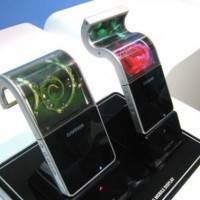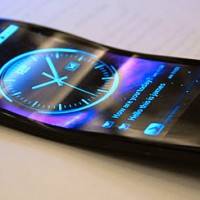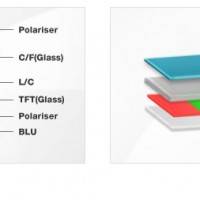
Samsung’s flexible OLED displays might become a reality soon on smartphone and tablets. We’ve seen this in the past with Samsung showing off the technology last year, and recently naming their flexible OLED displays “Youm” with a release date aiming for late 2012. This dream might soon become a reality (although I’m still not sure of the uses) as Samsung has announced they’ve received “huge orders” of their impressive flexible OLED displays.
Remember the Galaxy S Skin flexible device we saw last year? Yup, just think of all the possibilities with this technology. Whether or not it would be practical on a daily use smartphone is still up in the air but we have a feeling Samsung has some unique and impressive devices up their sleeves. According to OLED-displays.net Samsung’s new flexible OLED’s are still on track for a late 2012 release date, and they’ve received “huge orders” from Youm, and plan to have tons of these displays hit the market later this year.

Samsung Electronics Chairman Kwon Oh-Hyun said today that the Korean company is getting “huge orders” from electronics makers for flexible AMOLED Displays by YOUM, and that they expect it to be ready for mass production in Q3 of this year. Oh-Hyun also mentioned the demand is significant, and they expect OLED’s to replace LCD by 2015.
Now we can’t get ahead of ourselves. We won’t be seeing smartphone like the picture above anytime soon, but Samsung could release watch displays, or tablets with limited flexibility at some point in the near future. With leading companies like Samsung, Apple, and others invested in this technology the options are basically limitless, they just need to create them. Durability may be an issue but I’d love to see some awesome products from Samsung this year, or in early 2013. What do you guys think?













For phones, it could be something as mundane as a clam shell type design. I would love to be able to fold my smartphone so that the screen isn’t open to the elements. I miss clamshell phones! Imagine something like a Samsung Note that you could fold to easily fit into the back pocket of skinny jeans.
But then it would need to be twice as thin to not be too fat once folded, then battery life goes out the window.
I see your point though.
A watch would be cool.
Since there are certainly better uses
I could see this technology being used by architects as blueprints. Changes could be made for clients in realtime, on site, and without redrawing the whole print.
Simply watch any Marvel movie, namely Iron Man or recently The Avengers – plenty of examples used there!
I can’t wait till people patents this and sues SAMSUNG. Lolz